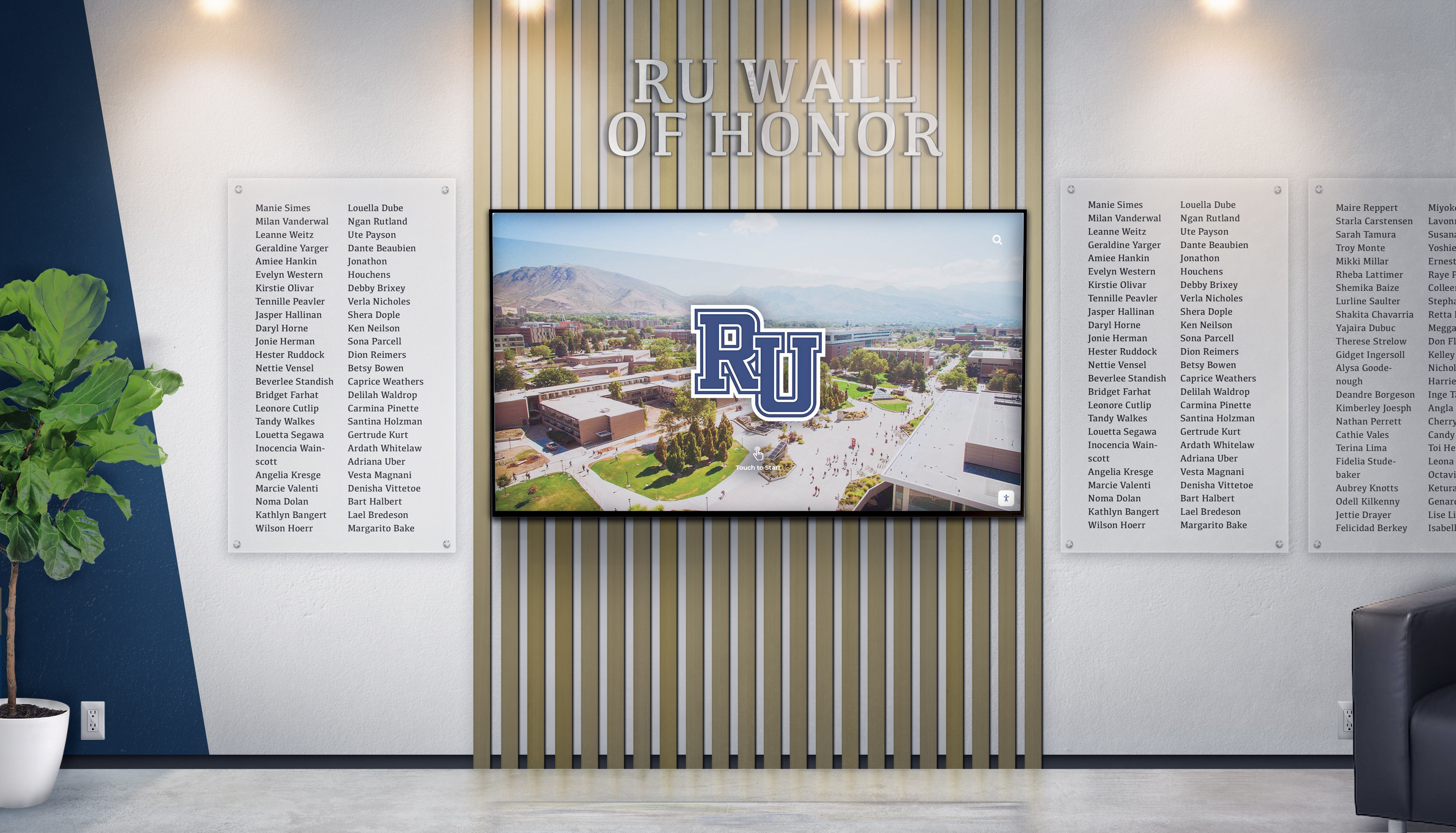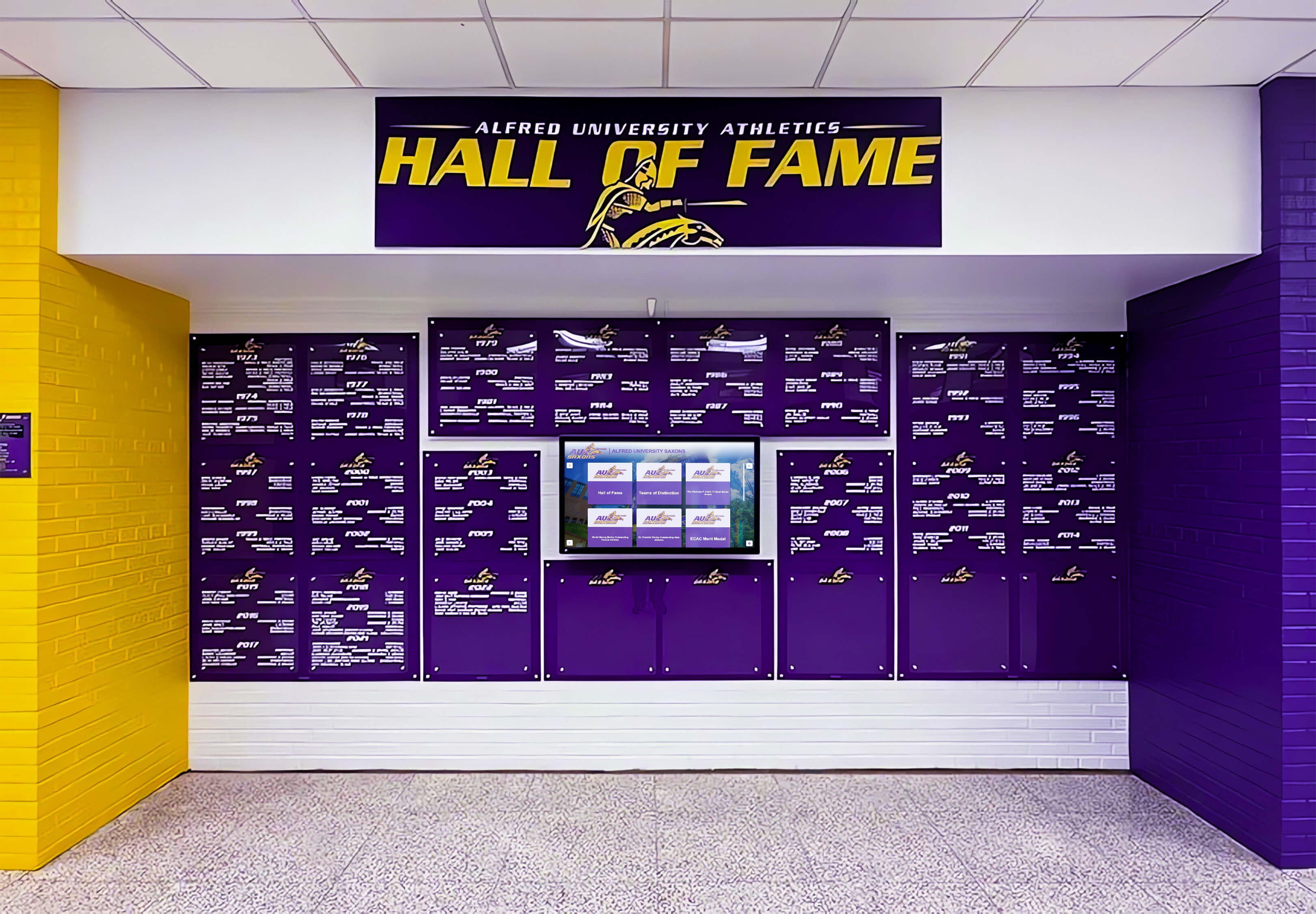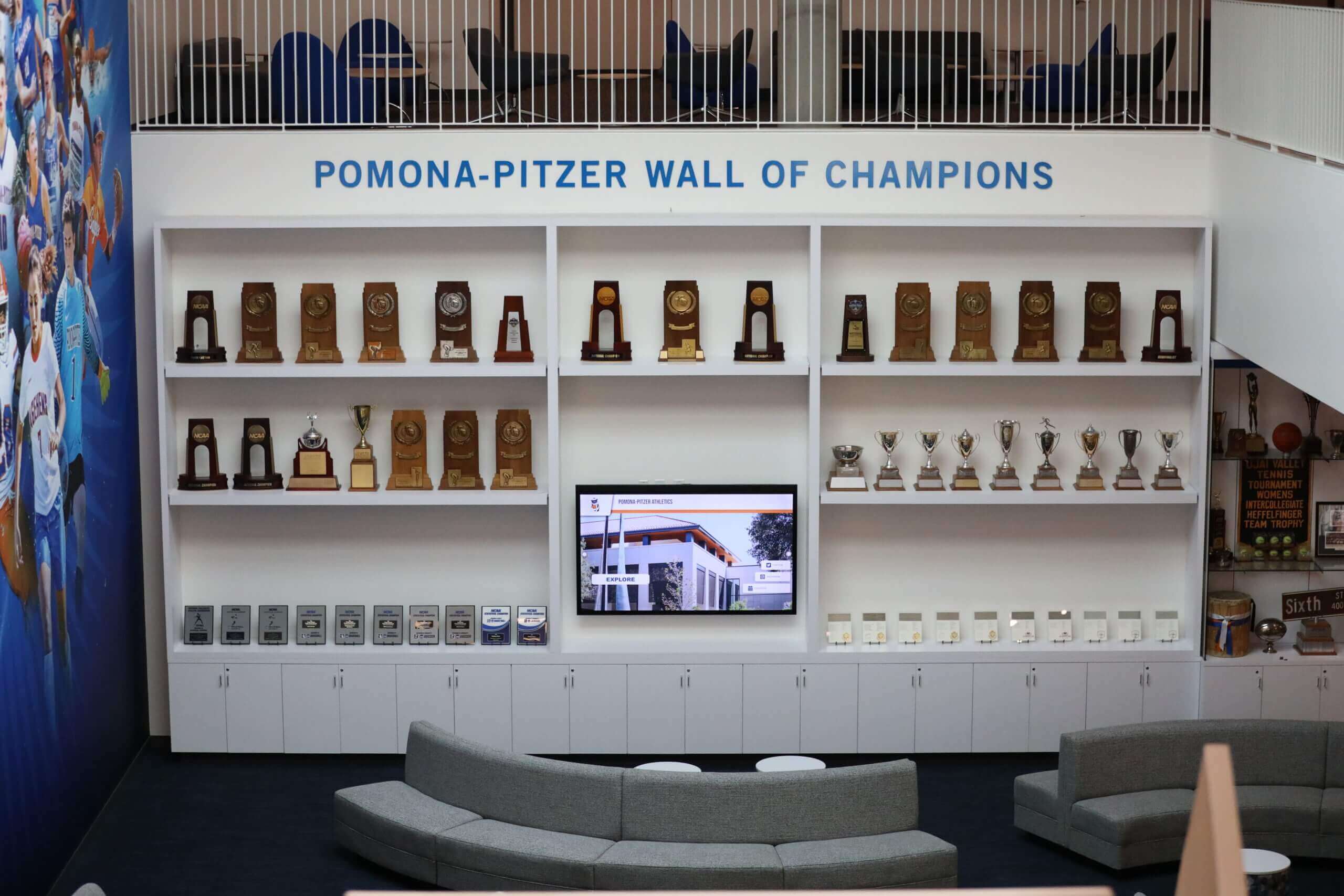Advancement and marketing teams in schools, universities, and organizations face mounting pressure to achieve more with limited resources. From driving donor engagement and student recruitment to building institutional pride and managing complex content libraries, these professionals juggle competing priorities while demonstrating measurable ROI.
Digital recognition technology has emerged as a powerful tool that addresses multiple advancement and marketing challenges simultaneously. Solutions like Rocket Alumni Solutions provide integrated platforms that streamline workflows, enhance engagement, and deliver quantifiable results across fundraising, recruitment, communications, and brand management initiatives.
This comprehensive guide explores how modern digital recognition and content management solutions specifically support advancement and marketing teams’ core objectives, with practical strategies for implementation and measurement.
Understanding the Advancement and Marketing Challenge
Modern advancement and marketing teams operate in an increasingly complex environment where traditional approaches no longer deliver expected results. Several converging factors create significant challenges for these professionals.
Content Proliferation and Management Complexity
Educational institutions and organizations generate thousands of digital assets annually—event photos, achievement highlights, donor recognition materials, recruitment videos, social media graphics, and branded templates. Without proper organization, this valuable content disappears into email attachments, personal drives, and forgotten folders.
Marketing and advancement professionals report spending significant time searching for specific photos or recreating content that exists somewhere but cannot be found. According to case studies from institutions implementing digital asset management systems, staff typically spend approximately one hour per design project simply searching for appropriate materials before implementing proper content management solutions.

This inefficiency compounds across hundreds of annual projects, wasting valuable creative time that could be directed toward strategy and high-value activities.
Demonstrating Measurable ROI
Advancement officers and marketing directors face increasing scrutiny to demonstrate concrete returns on investment for every initiative. Anecdotal success stories no longer satisfy boards, administrators, or donors who demand data-driven evidence of impact.
Traditional recognition methods—plaques, physical displays, printed materials—provide limited metrics beyond initial costs. Digital platforms offer comprehensive analytics tracking engagement, reach, frequency, duration, and downstream impacts on giving and recruitment.
Donor Engagement in a Digital Age
Today’s donors expect modern, engaging recognition experiences that reflect organizational innovation. Static plaques and printed donor walls fail to create emotional connections or inspire continued giving among audiences accustomed to interactive digital experiences.
Advancement teams struggle to balance meaningful donor recognition with scalability—how do you honor hundreds or thousands of contributors while maintaining individual significance? Digital solutions provide frameworks for recognizing donors at all levels while preserving personalization.
Recruitment Competition
Schools and universities compete fiercely for student enrollment. Prospective students and families make decisions based on multiple factors including campus culture, achievement outcomes, institutional values, and overall impressions formed during tours and digital interactions.
Marketing teams need compelling ways to showcase institutional excellence, alumni success stories, and vibrant community life that differentiate their organizations from competitors. Digital recognition displays serve as powerful differentiators during campus visits while providing continuously updated content for digital marketing campaigns.
Brand Consistency Across Departments
When multiple departments create communications independently, maintaining cohesive brand identity becomes nearly impossible. Outdated logos, off-brand colors, inconsistent messaging, and amateur designs created by well-meaning volunteers undermine professional image.
Marketing directors need centralized systems ensuring everyone—from athletics to academics, admissions to alumni relations—accesses current brand assets and follows established guidelines.

How Digital Recognition Platforms Support Advancement Goals
Modern digital recognition solutions address advancement teams’ core challenges through integrated capabilities that streamline workflows, enhance engagement, and provide measurable impact.
Centralized Digital Asset Management
Professional digital asset management transforms content chaos into strategic organizational resources. Rocket Alumni Solutions provides centralized libraries where all recognition-related content—photos, videos, achievement records, donor information, historical archives—resides in organized, searchable formats.
Key Capabilities for Advancement Teams:
- Advanced Search and Discovery: Find specific content in seconds using metadata filtering, visual search, keywords, dates, and custom fields rather than navigating folder hierarchies
- Rights and Permissions Management: Track photo releases, donor privacy preferences, and usage rights ensuring compliance with regulations and family preferences
- Version Control: Maintain complete histories of content updates, edits, and approvals with audit trails documenting who changed what and when
- Collaborative Workflows: Enable seamless collaboration between advancement officers, designers, photographers, and external vendors with comment threads and approval processes built into content management
- Automated Organization: Leverage AI-powered tagging and facial recognition to automatically organize and categorize content reducing manual metadata entry time
These capabilities directly translate to time savings—institutions implementing proper asset management report 60-70% reductions in time spent locating specific content, freeing advancement professionals for more valuable strategic activities.
Interactive Donor Recognition
Traditional donor walls quickly become outdated, require costly updates, and provide limited space for recognition expansion. Digital donor recognition walls transform acknowledgment into dynamic engagement opportunities.
Advantages for Development Teams:
Modern interactive donor recognition provides capabilities impossible with traditional approaches:
Unlimited Recognition Capacity
Digital platforms accommodate recognition for donors at all levels—from major gift contributors to annual fund participants—without space constraints limiting who can be honored.
Multimedia Storytelling
Go beyond names and amounts to share donor stories, impact narratives, videos, photos, and testimonials that create emotional connections inspiring continued support.
Real-Time Updates
Recognize new contributions immediately through cloud-based content management requiring no physical construction or installation delays.
Giving Level Visualization
Display recognition societies, cumulative giving milestones, campaign progress, and challenge match status dynamically encouraging increased participation.
Institutions implementing digital donor recognition solutions frequently report substantial increases in alumni donations—commonly 15-25% in the first year, with sustained growth as the system matures and engagement deepens.
Alumni Engagement and Storytelling
Advancement teams need compelling content showcasing institutional impact through alumni achievements. Digital platforms enable rich storytelling impossible with traditional formats.

Building Emotional Connections:
Content strategies for digital recognition focus on creating narratives that inspire current community members while strengthening alumni identification with the institution. Effective implementations include:
- Multi-layered Profile Content: Surface-level information leads to deeper explorations—browse achievements, view photo galleries, watch video interviews, read extended biographies
- Searchable Achievement Databases: Visitors discover alumni who share interests, hometowns, majors, careers, or graduation years creating personal connections
- Historical Timelines: Contextualize individual achievements within institutional history showing evolution and continuity
- Impact Narratives: Connect alumni success to institutional preparation demonstrating educational value proposition to prospective students and donors
- Interactive Features: Touch-based exploration, search capabilities, social sharing, and mobile access extend engagement beyond physical displays
These storytelling capabilities support multiple advancement objectives simultaneously—inspiring student aspiration, demonstrating donor impact, strengthening alumni bonds, and differentiating institutions during recruitment.
Recruitment Marketing Support
Marketing teams gain powerful tools for showcasing institutional excellence to prospective students and families through organized recognition content.
Campus Visit Enhancement:
Digital recognition displays become memorable focal points during campus tours. Interactive displays engage prospective students who discover alumni sharing their interests or geographic backgrounds, creating aspirational connections impossible through printed materials.
Data suggests 70-80% of prospective students find interactive legacy displays influential in decision-making, with campus tours incorporating these elements seeing noticeably higher conversion rates from visit to application.
Digital Marketing Content Pipeline:
Well-organized asset libraries enable marketing teams to quickly assemble:
- Alumni success stories for social media campaigns
- Achievement highlights for recruitment videos and materials
- Diversity and representation examples for authentic institutional marketing
- Program-specific content targeting different prospective student interests
- Historical legacy content demonstrating institutional longevity and tradition
The same content management systems supporting physical displays provide organized libraries marketers access for broader digital campaigns, maximizing ROI on every photo and video investment.

Brand Management and Template Distribution
Marketing directors gain centralized control over brand assets ensuring consistency across all departments and communications.
Brand Portal Capabilities:
Digital platforms provide branded portals where approved assets remain always available:
- Current logo files in all required formats (PNG, SVG, EPS, high-resolution, web-optimized)
- Brand color palettes with exact values (Hex, RGB, CMYK, Pantone)
- Typography specifications and font files
- Design templates for common materials (flyers, social graphics, presentations, forms)
- Usage guidelines and dos/don’ts for brand elements
- Pre-approved photo selections showing desired diversity and representation
When everyone from department chairs to student organizations accesses proper brand resources, off-brand materials naturally decrease. Self-service capabilities don’t compromise standards—they improve consistency by providing proper tools to all content creators.
Analytics and Engagement Metrics
Unlike traditional recognition methods, digital platforms provide comprehensive analytics demonstrating impact and informing strategy.
Measurable Insights for Advancement:
ROI tracking for digital recognition includes metrics valuable for reporting and optimization:
Engagement Metrics
- Session duration and interaction depth
- Most-viewed profiles and content
- Search term patterns revealing interests
- Peak usage times and seasonal trends
- Return visitor percentages
Strategic Insights
- Content gaps where searches yield few results
- Underutilized assets requiring promotion
- Donor story effectiveness comparisons
- Alumni engagement by graduation decade
- Geographic interest patterns
These data-driven insights help advancement teams focus resources on content that resonates, identify recognition opportunities, optimize giving campaigns, and demonstrate concrete ROI to leadership and boards.
Practical Implementation for Advancement Teams
Successfully deploying digital recognition technology requires strategic planning aligned with advancement objectives and institutional culture.
Assessing Organizational Readiness
Before implementation, advancement and marketing leaders should evaluate:
Content Inventory and Audit
Catalog existing digital assets across departments to understand volume, organization, quality, and gaps. This assessment reveals:
- Current storage locations and accessibility issues
- Photo permission and rights documentation status
- Historical content requiring digitization
- Redundant photography reducing efficiency
- Brand asset currency and completeness
Stakeholder Needs Analysis
Interview representatives from advancement, marketing, admissions, athletics, academics, and alumni relations to understand:
- Current pain points and frustrations with content management
- Specific recognition objectives and priorities
- Technical comfort levels and training needs
- Budget constraints and approval processes
- Timeline expectations and urgency
Technical Infrastructure Evaluation
Assess existing technology ecosystem including:
- Network connectivity and power availability at proposed display locations
- Integration requirements with CRM, website, and communication platforms
- IT department capacity and support availability
- Security and access control needs
- Mobile device policies and usage patterns

Content Strategy Development
Effective implementations require thoughtful content planning before technology deployment.
Defining Recognition Categories and Criteria:
Establish clear frameworks for who gets recognized and how:
- Donor giving levels and recognition societies
- Alumni achievement categories and selection processes
- Athletic record classifications and verification
- Historical significance and archival priorities
- Staff, faculty, and volunteer recognition approaches
Content Collection and Organization:
Develop systematic processes for gathering materials:
- Outreach templates for collecting alumni stories and photos
- Photo permission documentation and tracking systems
- Naming conventions and metadata standards
- Quality guidelines for acceptable image resolution and format
- Approval workflows ensuring accuracy and appropriateness
Storytelling Guidelines and Templates:
Create standards ensuring consistent, compelling narratives:
- Profile length recommendations for different recognition types
- Writing style guidelines matching institutional voice
- Required and optional content elements
- Multimedia incorporation best practices
- Update schedules and maintenance procedures
These documented strategies ensure consistent, high-quality content that advances institutional objectives while maintaining manageable workloads for advancement teams.
Training and Adoption Planning
Technology succeeds only when people use it effectively. Comprehensive training programs ensure staff embrace rather than resist new systems.
Tiered Training Approach:
Different stakeholders require different levels of expertise:
- Power Users: Deep training on all features for advancement staff managing content daily (development officers, marketing coordinators, alumni relations directors)
- Content Contributors: Focused training on uploading, tagging, and basic organization for coaches, program directors, and department administrators
- Casual Users: Simple orientation on searching and accessing approved content for general staff and volunteers
- Leadership: Overview of capabilities, analytics interpretation, and strategic value demonstration for executive teams
Ongoing Support Structures:
Initial training alone proves insufficient—sustained support ensures long-term success:
- Designated internal champions becoming go-to experts for departments
- Quick-reference guides and video tutorials for common tasks
- Regular office hours for questions and troubleshooting
- Quarterly check-ins with departments reviewing usage and gathering feedback
- Annual refresher sessions highlighting new features and best practices
Schools and organizations investing in proper training report dramatically higher adoption rates and satisfaction compared to those treating training as optional.
Measuring Impact and Demonstrating Value
Advancement and marketing directors must demonstrate concrete returns on digital recognition investments to justify ongoing resources and expansion.
Quantifiable Metrics for Advancement Success
Fundraising Impact Indicators:
Track changes in key development metrics following implementation:
- Alumni giving participation rates by class year and giving level
- Average gift amounts across donor categories
- Major gift pipeline progression and conversion rates
- Planned giving inquiries and commitments
- Campaign goal attainment timelines
Institutions implementing digital donor recognition frequently report donation increases of 15-25% in year one, with sustained growth as systems mature and engagement deepens.
Recruitment and Enrollment Outcomes:
Monitor admission funnel metrics influenced by campus experience:
- Yield rates from campus visit to application
- Application volume changes by program and demographic
- Admitted student enrollment decisions (“why did you choose us” survey responses)
- Campus tour satisfaction ratings
- Digital engagement with online recognition content
Marketing teams can directly attribute recruitment advantages to innovative campus experiences differentiating institutions from competitors.
Operational Efficiency Gains:
Document time and cost savings from improved workflows:
- Hours saved on content search and file management
- Reduced photography and design costs through better asset reuse
- Decreased printing waste from outdated materials
- Staff capacity freed for strategic initiatives
- Vendor management simplification
Based on case study data, institutions typically achieve 60-83% time savings on content-related workflows after implementing proper digital asset management solutions.
Qualitative Value Demonstration
Beyond numbers, advancement teams should document intangible benefits:
Stakeholder Testimonials:
Collect feedback from:
- Donors describing their recognition experience and emotional connection
- Alumni sharing how seeing institutional pride influenced continued engagement
- Prospective students explaining how campus displays influenced enrollment decisions
- Faculty and staff noting improvements in brand consistency and resource access
- External partners commenting on professional impression and innovation
Before-and-After Narratives:
Document transformation stories:
- Photos showing cluttered vs. organized content systems
- Workflow diagrams illustrating process simplification
- Time-lapse documentation of content creation acceleration
- Brand consistency improvements across materials
- Engagement evolution from static to interactive
These qualitative indicators complement quantitative metrics, building compelling cases for ongoing investment and expansion to additional recognition categories or campus locations.

Integrating Recognition with Broader Advancement Strategy
The most effective digital recognition implementations function as components of comprehensive advancement strategies rather than standalone initiatives.
Connecting Recognition to Annual Fund Campaigns
Participation Visualization:
Display annual fund participation rates by class year, creating friendly competition while recognizing contributors at all levels. Challenge matches, countdown timers, and real-time progress updates encourage increased giving during campaign periods.
Recognition Level Showcasing:
Help donors visualize recognition society benefits and membership requirements, inspiring upgrades from current giving levels toward named recognition opportunities.
Impact Storytelling:
Connect donor contributions to tangible outcomes through photos, videos, and narratives showing how annual fund support enables specific programs, scholarships, facilities improvements, and student opportunities.
Enhancing Capital Campaign Visibility
Progress Tracking and Milestone Celebration:
Digital recognition displays provide dynamic platforms for visualizing capital campaign progress, celebrating milestones, and maintaining momentum through multi-year initiatives.
Lead Donor Storytelling:
Feature major gift contributors with rich multimedia profiles explaining their philanthropic motivations, connection to the institution, and vision for campaign impact—inspiring others while honoring leadership giving.
Naming Opportunity Visualization:
Help prospective donors envision recognition opportunities through rendering integration, virtual tours, and interactive exploration of spaces, programs, and positions available for naming gifts.
Supporting Planned Giving Programs
Legacy Society Recognition:
Honor planned giving commitments with dedicated recognition ensuring these vital future gifts receive appropriate acknowledgment despite deferred realization.
Multigenerational Giving Connections:
Highlight families with giving traditions spanning generations, demonstrating institutional loyalty while inspiring similar multi-decade commitments among other families.
Impact Legacy Storytelling:
Profile how planned gifts from previous generations continue supporting current students and programs, helping prospects visualize their own legacy impact decades into the future.
Conclusion: Transforming Advancement Through Digital Innovation
Advancement and marketing teams face unprecedented challenges balancing donor engagement, recruitment competition, brand management, and demonstrating measurable ROI with limited resources. Digital recognition technology provides integrated solutions addressing multiple objectives simultaneously while delivering quantifiable results.
Solutions like Rocket Alumni Solutions empower advancement professionals with:
- Centralized digital asset management streamlining workflows and eliminating content search frustration
- Interactive donor recognition inspiring continued giving through engaging, personalized experiences
- Alumni storytelling capabilities strengthening institutional connections and demonstrating educational impact
- Recruitment marketing support differentiating institutions during critical campus visit experiences
- Brand management tools ensuring consistency across all departments and communications
- Comprehensive analytics demonstrating concrete ROI and informing strategic decisions
Successful implementations begin with clear objective alignment, involve stakeholders across departments in planning, commit to proper training and content development, and establish measurement frameworks demonstrating ongoing value.
For advancement and marketing teams ready to transform how they engage donors, recruit students, manage content, and demonstrate impact, modern digital recognition platforms offer proven solutions delivering results across multiple institutional priorities. The investment in these integrated systems pays dividends through increased giving, enhanced recruitment, operational efficiency, and strengthened institutional pride for years to come.
Ready to explore how Rocket Alumni Solutions can support your advancement and marketing objectives? Contact us to discuss your institution’s specific needs and discover how our digital recognition platforms can transform your engagement strategies while delivering measurable ROI.

































